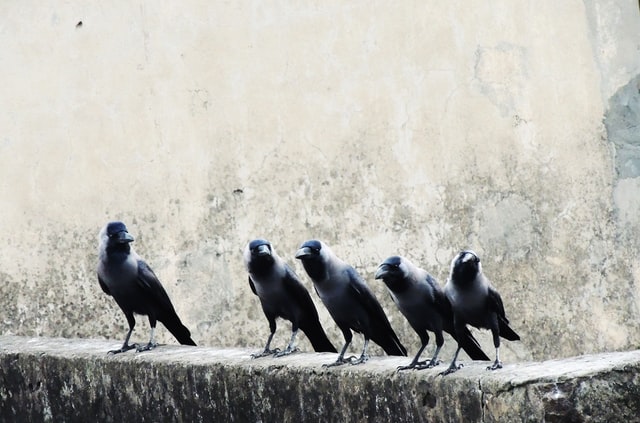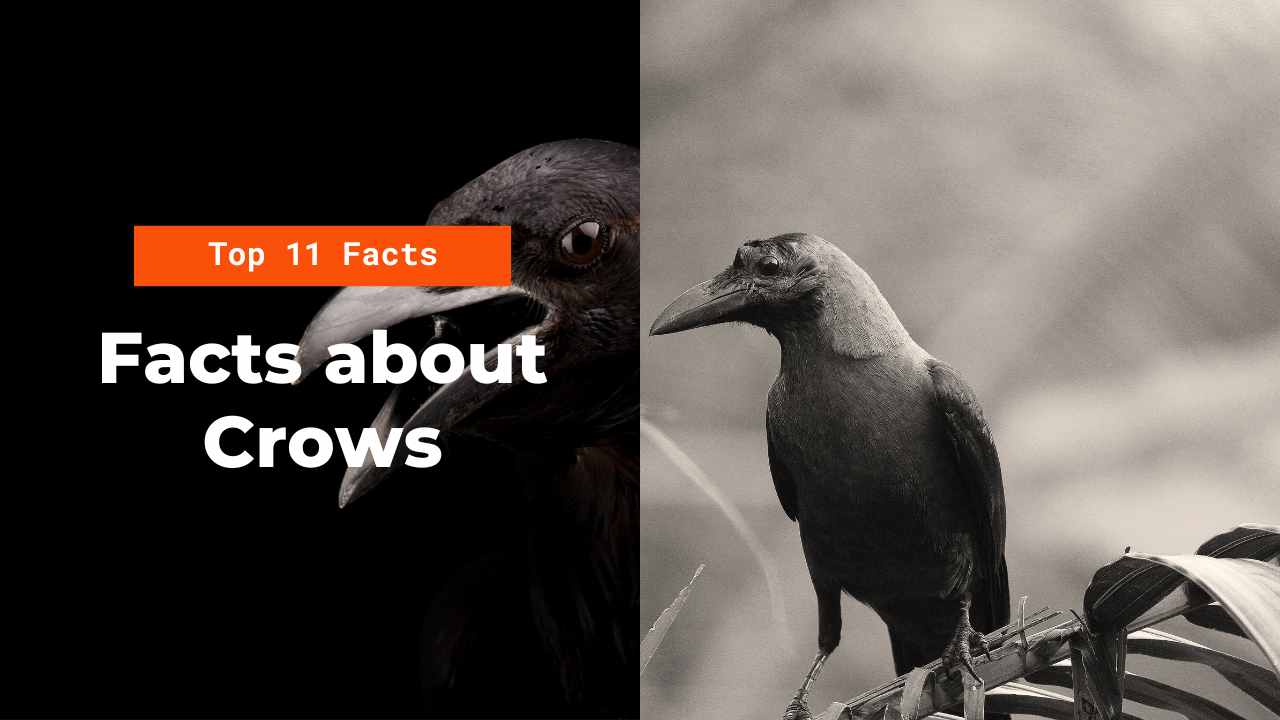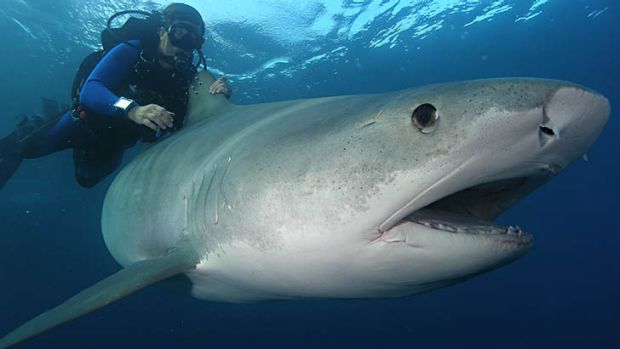
- Crows are very intelligent birds. They have excellent problem-solving skills. They have been observed using tools to obtain food and solve complex tasks, and their cognitive abilities are frequently compared to those of primates.
- There are a total 40 species of crows. They are found all around the world. Raven is the most common. The Crows belong to the Corvidae family of birds, which consists of around 135 species of birds. One of the largest species in the genus Corvus, the raven is widely distributed throughout the Northern Hemisphere.
- Crows live alone and also in groups. A group of crows is called murder. If any member of their group dies, they will try to find out who killed that member then they will try to chase the predator. This behavior is called mobbing.
- Crows are omnivores, which means they can eat anything like fruits, nuts, grains, seeds, insects, reptiles, mammals, etc. Their diverse diet enables them to endure a range of conditions and adapt to different environments.
- Crows can mimic humans, learn counting up-to 7 and speak around 50 words if trained; this shows their intelligence. They can mimic their owners, showcasing their sophisticated vocalization abilities.
- In a study, it was found that crows can actually remember the faces of humans who have harmed them, and this memory lasts throughout their lives.
- Crows can live anywhere from 15 to 40 years in the wild, depending on the resources they have access to and the surrounding environment.
- Crows are known for their distinctive “caw-caw” sound, and they employ a range of vocalizations to interact with one another.
- Because of their fearlessness, crows are frequently observed chasing away larger birds, like eagles, in order to defend their territory.
- Male and female crows remain together to construct their nests and care for their young because they are monogamous. During the nesting season, they cooperate and show strong pair bonds.
- Crows are scavengers in addition to hunters and foragers; by clearing out carrion and other organic waste, they contribute significantly to the ecosystem.





